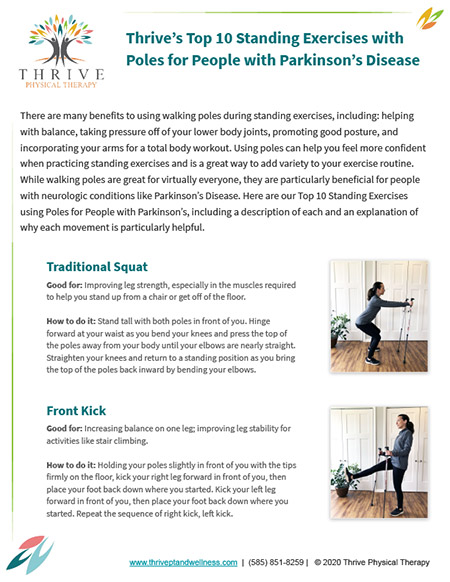Mr. G is an 82-years-young gentleman who recently changed primary care providers. He sits across from his new doctor in the fluorescent light of the medical office. The young physician gazes at her computer screen for a few moments, reviewing Mr. G’s medical history and then looks up and asks “How long have you had Parkinson’s Disease?” Mr. G was diagnosed with PD on August 12th, 2014 and he readily recalls the exact day of the week and the weather that morning–a still vivid memory that many people with Parkinson’s never forget. Mr. G answers confidently and it satisfies the doctor’s inquiry as she moves onto her next question about his immunization history.
But wait….
Mr. G did not “get” PD on August 12th, 2014. The condition was actually present in his body many years earlier. It was i the months leading up to that day that his wife became concerned about his inability to keep up with her in the grocery store, his shuffling steps and tripping over rugs with a few falls, and his whole body stiffness making it hard for him to get out of bed in the morning.
Up until then, there weren’t any signs that something was going on…or were there?

Mr. G’s motor symptoms were well progressed when he was diagnosed in 2014. By the time many people receive a PD diagnosis, they have already lost 80% of the dopamine producing cells in their brain. Because he didn’t exhibit a tremor, a symptom most people associate with PD, Mr. and Mrs. G figured his stiffness and slowness were due to “old age.” (In fact, approximately 30% of people with Parkinson’s do not experience a tremor).
Early motor symptoms in Parkinson’s can be tricky to detect–especially by the person experiencing them because the changes in the brain actually make it harder to feel these very changes. Because of this, many spouses or loved ones actually notice physical changes before the person with PD does.
These motor symptoms may include:
- Posture changes
- Loss of arm swing on one side of the body
- Shortened or unequal steps while walking
- Slow movements
- Stiffness
- Tremor
- Decreased stamina
- Feeling off balance
- Plopping back into a chair when rising to stand
- Trouble rolling or repositioning in bed at night
We now know that PD is often present in a person’s body for years–even decades–before they are diagnosed. During this earlier stage of neurodegeneration, called the Prodromal Phase, there are signs and symptoms present, but they are often ignored, unnoticed, or brushed off as a “normal part of aging.” People who exhibit these characteristics have a higher than average risk of developing Parkinson’s Disease.
They include:
- Olfactory loss (diminished smell)
- Constipation
- REM sleep behavior disorder (involves acting out dreams)
- Excessive daytime sleepiness
- Depression/anxiety
- Global cognitive deficit
- Orthostatic hypotension (low blood pressure that happens when you stand up from sitting or lying down)
- Erectile dysfunction
- Urinary dysfunction
By the time he was diagnosed with PD. Mr. G had been falling asleep in his recliner by 3:00 pm every day and he had become withdrawn, sedentary, and lost interest in his gardening and fishing hobbies over the previous five years. He had struggled with incomplete bowel movements for ten years, and had been sleeping in a separate bed for about three years because he needed to get up and use the bathroom up to five times every night and he didn’t want to disturb his wife.
And while the prodromal phase symptoms wouldn’t have warranted a formal Parkinson’s Diagnosis (physicians currently diagnose PD based on the presence of, at a minimum, bradykinesia plus either tremor or rigidity, as well as responsiveness to dopamine replacement medication), What if the G family had known that these symptoms could be early signs of full-blown PD in the coming years?
This is where the exciting new research on Prodromal PD comes in. It’s reasonable to think that in the near future doctors will be much more likely to detect neurodegeneration due to Parkinson’s Disease much earlier. We can also expect that our evolving understanding of this complex condition will result in new, effective treatments to stop the disease in its tracks BEFORE it gets to the point of “unmasking” the motor symptoms I listed earlier. This is extremely exciting and much anticipated by all in the Parkinson’s research, healthcare provider, and patient communities.
Today we can use our knowledge of early symptom identification to be even more proactive with early and intensive exercise for people with suspected PD pathology. Exercise is neuroprotective–it actually has the power to protect the dopamine cells that are progressively lost with Parkinson’s Disease. When people exercise consistently and with adequate intensity, their brains can literally be transformed and the progression of PD can be slowed, potentially changing the entire course of the disease’s trajectory for the better. And the earlier a person starts, the better and more effective exercise will “work” to help them.
Our hope at Thrive is that medical providers will begin to embrace this paradigm shift and help to
a) apply what we now know about Parkinson’s progression in the body to identify PD earlier.
b) refer people who are at increased risk based on prodromal symptom clusters to appropriate exercise and movement specialists (i.e. a neurologic physical therapist) immediately.
c) monitor these people for symptom progression and refer them to a movement disorders specialist when appropriate.
Will you help us promote Parkinson’s Disease awareness and the shift to a proactive approach for people with neurodegenerative conditions and share this blog post? You never know–it could change someone like Mr. G’s life!
References:
https://practicalneurology.com/articles/2018-may/prodromal-and-early-parkinsons-disease-diagnosis
https://www.ncbi.nlm.nih.gov/pmc/articles/PMC7225301/
https://onlinelibrary.wiley.com/doi/abs/10.1002/mds.27670
https://pubmed.ncbi.nlm.nih.gov/31719136/
https://www.sciencedirect.com/science/article/abs/pii/S0025619617308984
Dopamine image courtesy of: Dopamine icon vector by vectorstock







